Flexibility is a key property we look at as second grade students are learning about observable properties of matter in science. This simple flexibility science experiment is really more of a test and a fun one for kids. Read on to learn how we conduct this flexibility lab and add this easy science activity to your next properties of matter unit.
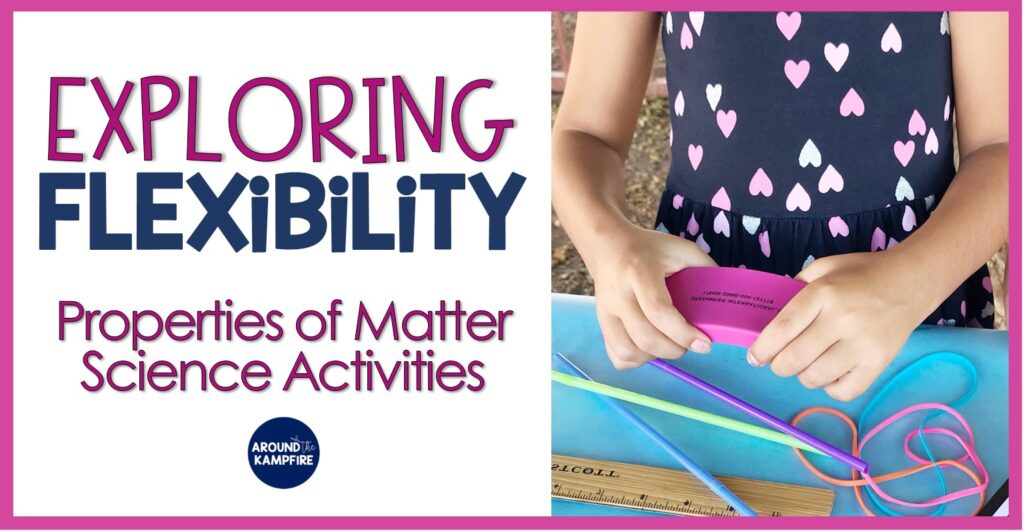
Flexibility science experiment
As students learn about structure and properties of matter they learn that properties can be observed, measured and tested. To give students experience in planning and conducting investigations as well as other science skills (I’ve listed below) I like to use simple tests that break things down one step at a time.
What is flexibility?
Before we start I like to make sure my students understand the vocabulary and accurate science terms to use. Flexibility refers to how bendable something is. The more bendable it is the more flexible it is. If matter is not bendable then we say it is rigid. Glass is an example of a material that is rigid. It will break if you try to bend it.
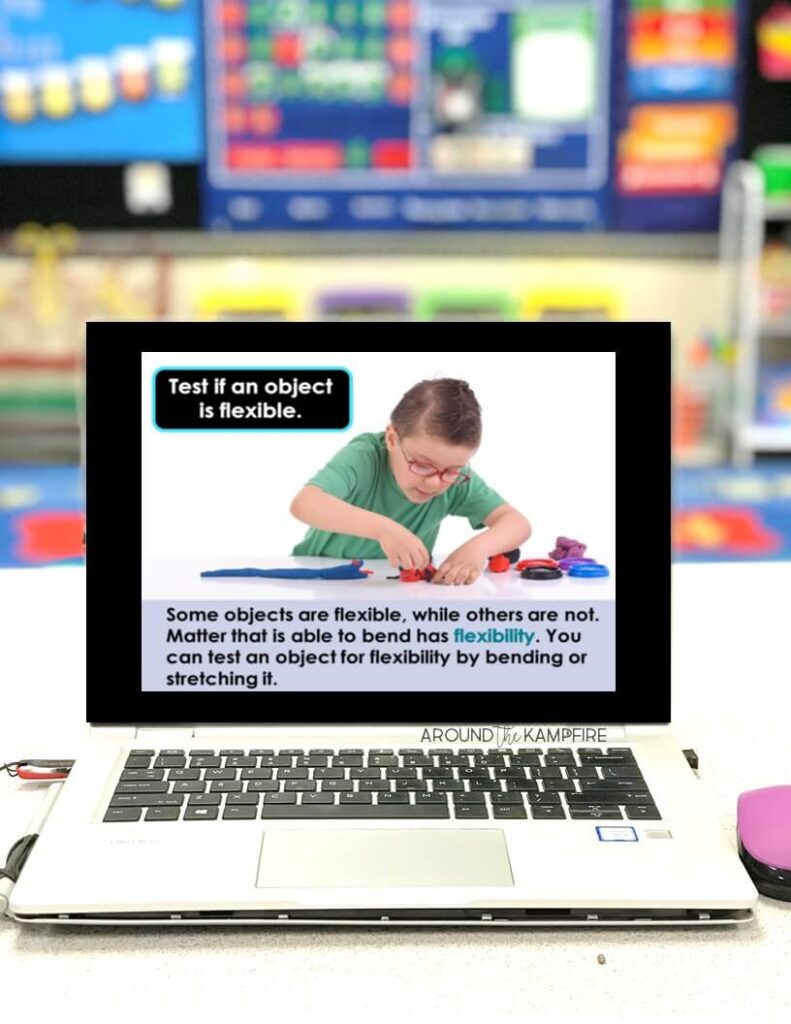 If an object can bend but then return to its original shape we call it elastic. A good example is a rubber band. Paperclips are flexible, but they stay bent when you bend them, so they are not elastic.
If an object can bend but then return to its original shape we call it elastic. A good example is a rubber band. Paperclips are flexible, but they stay bent when you bend them, so they are not elastic.
This being said, here is a fun flexibility science experiment I did with my second graders learning to describe observable properties of matter.
What are observable properties?
Begin by clarifying what observable properties are. Observable properties of matter are features or traits that can be seen. Features such as color, shape, size, texture, hardness, magnetism, transparency and of course, flexibility are all observable properties. Temperature on the other hand, can not easily be seen.
Materials:
Place students in pairs or small groups and provide a variety of objects for students to work with that are both rigid and flexible. We used:
- paperclips
- a pool noodle cut in 4 pieces
- large rubber erasers (from Dollar Tree)
- wooden and plastic rulers
- pencils
- metal teaspoons
- plastic forks
- straws
- rubber bands
Testing the properties of objects
Have students wear safety goggles if you have them as they will need to be careful when bending wooden objects and plastic silverware. (I have seen safety goggles at Dollar Tree.) I encouraged students to stop bending if it felt like the object was about to break, but accidents still sometimes happen.
Flexibility lab sheet is part of this properties of matter unit
Before they begin, have students draw the objects they will be testing. Next, have partners discuss how they will test the objects and predict which are flexible, rigid and elastic. As students test each object have them record the results in the chart on their lab sheet.
After they test, students sort and classify the objects into three groups (flexible, rigid, and elastic) then analyze and interpret their data. They did this by discussing then recording what they noticed about the materials the objects in each group are made of. they then listed materials that are flexible, rigid and elastic.
This flexibility science experiment is so simple to do yet incorporates a multitude of science skills we want our students to learn and apply. Skills such as:
- planning an investigation
- testing materials
- making and recording science observations
- describing materials and their properties
- classifying objects and materials by observable properties
- generating and producing data to answer a question
- investigate collaboratively
- analyze data from tests of an object to determine if it worked as intended
- constructing explanations
Find this flexibilty experiment in a complete, properties of matter science unit for 2nd grade, aligned to NGSS, that includes detailed daily lesson plans, teaching Power Point, science centers, writing activities, and 8 fun, hands-on investigations.
Be sure to pin this flexibility science experiment so you have it when you plan your properties of matter unit!
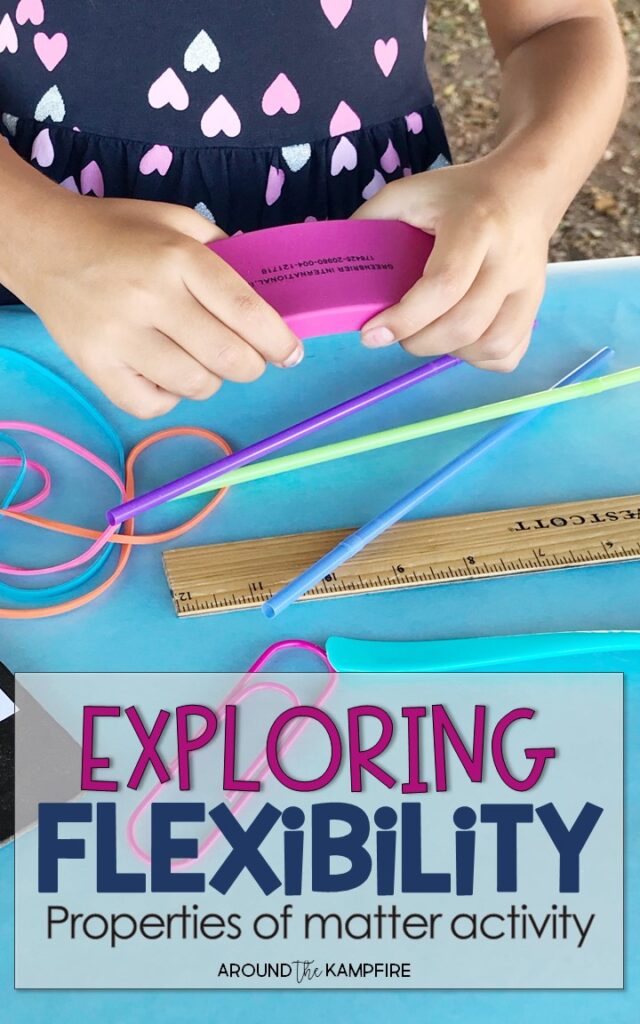
Find more hands-on, high engagement science activities in the posts below. Click on the pictures to read the posts.
Happy teaching!

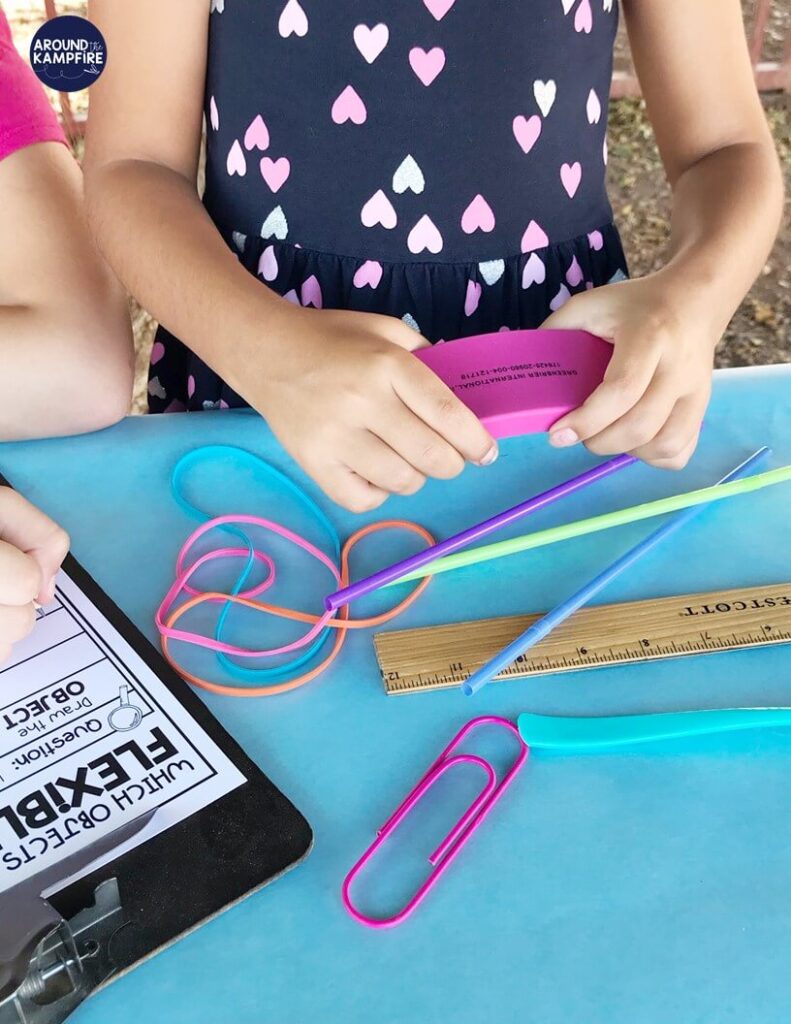


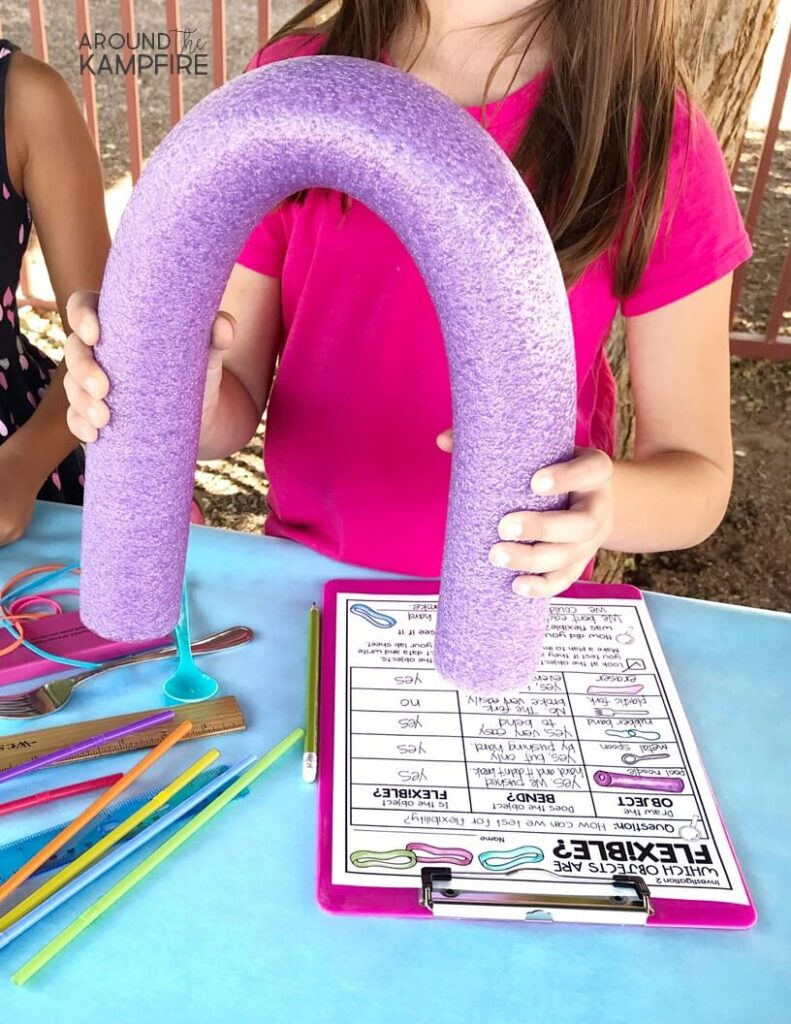

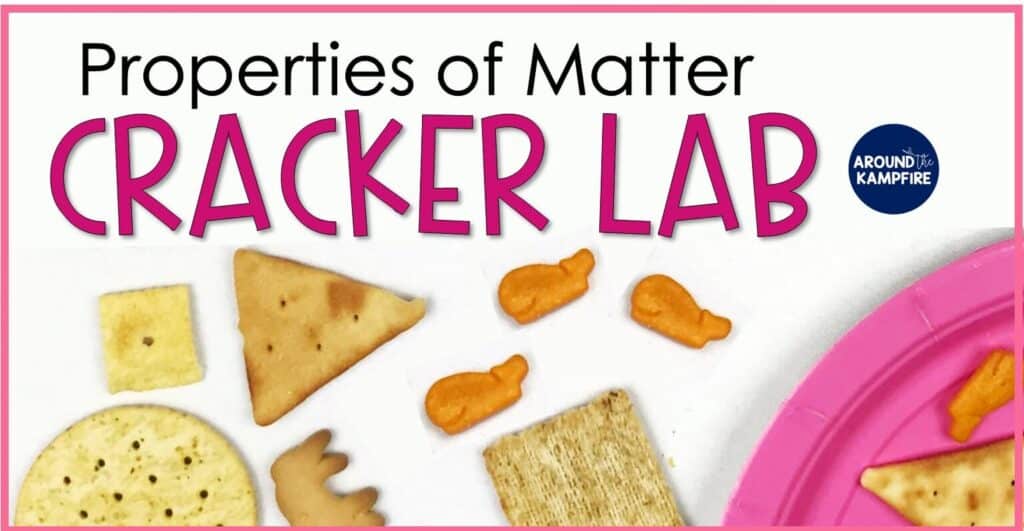

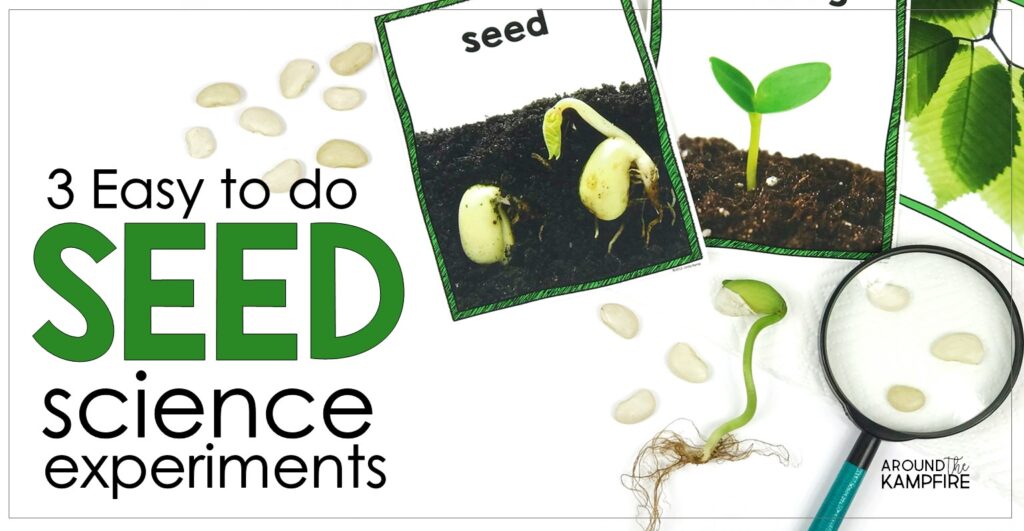




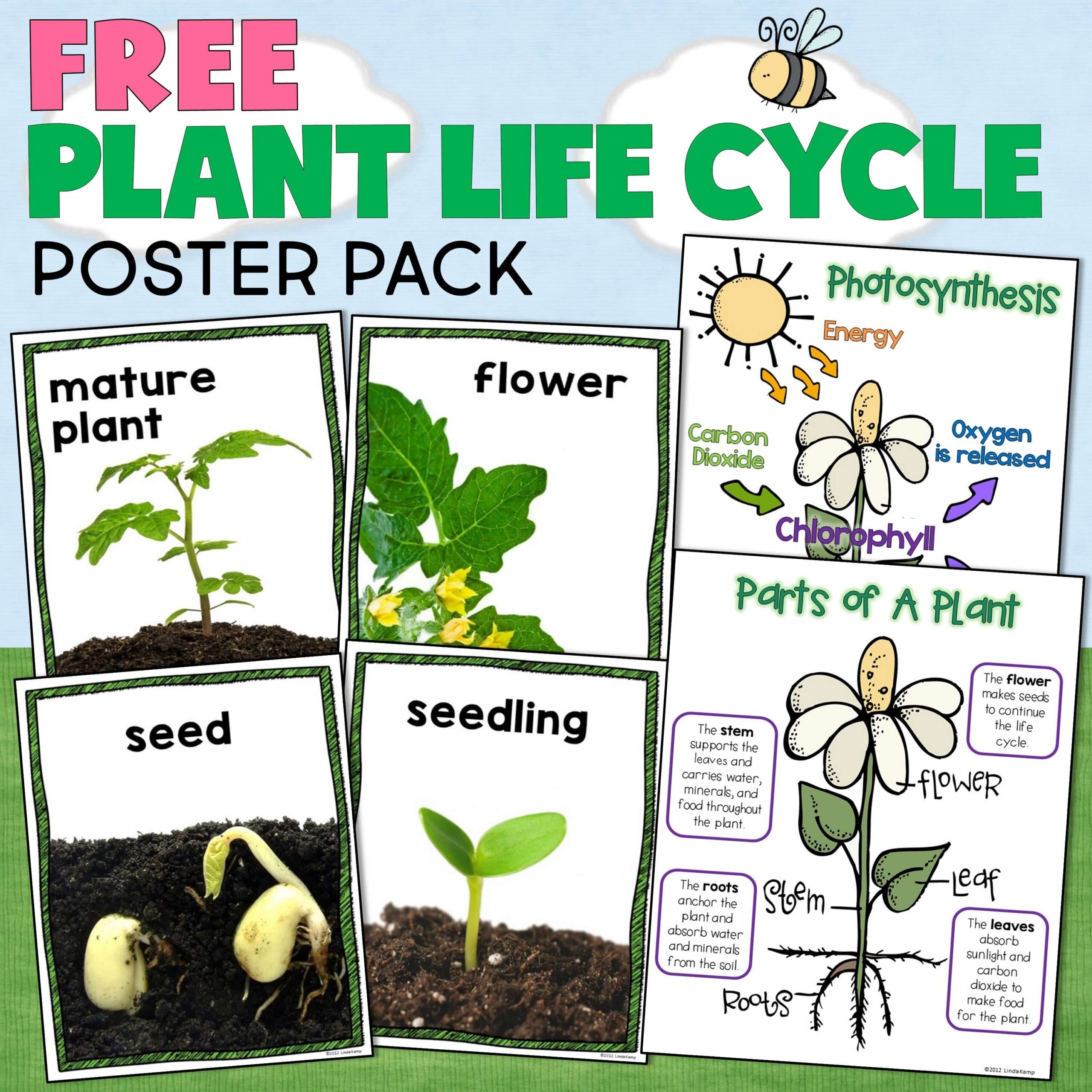
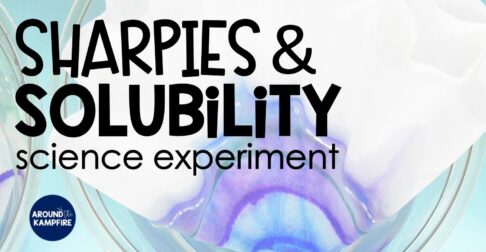



Awesome lessons and labs! Thank you!